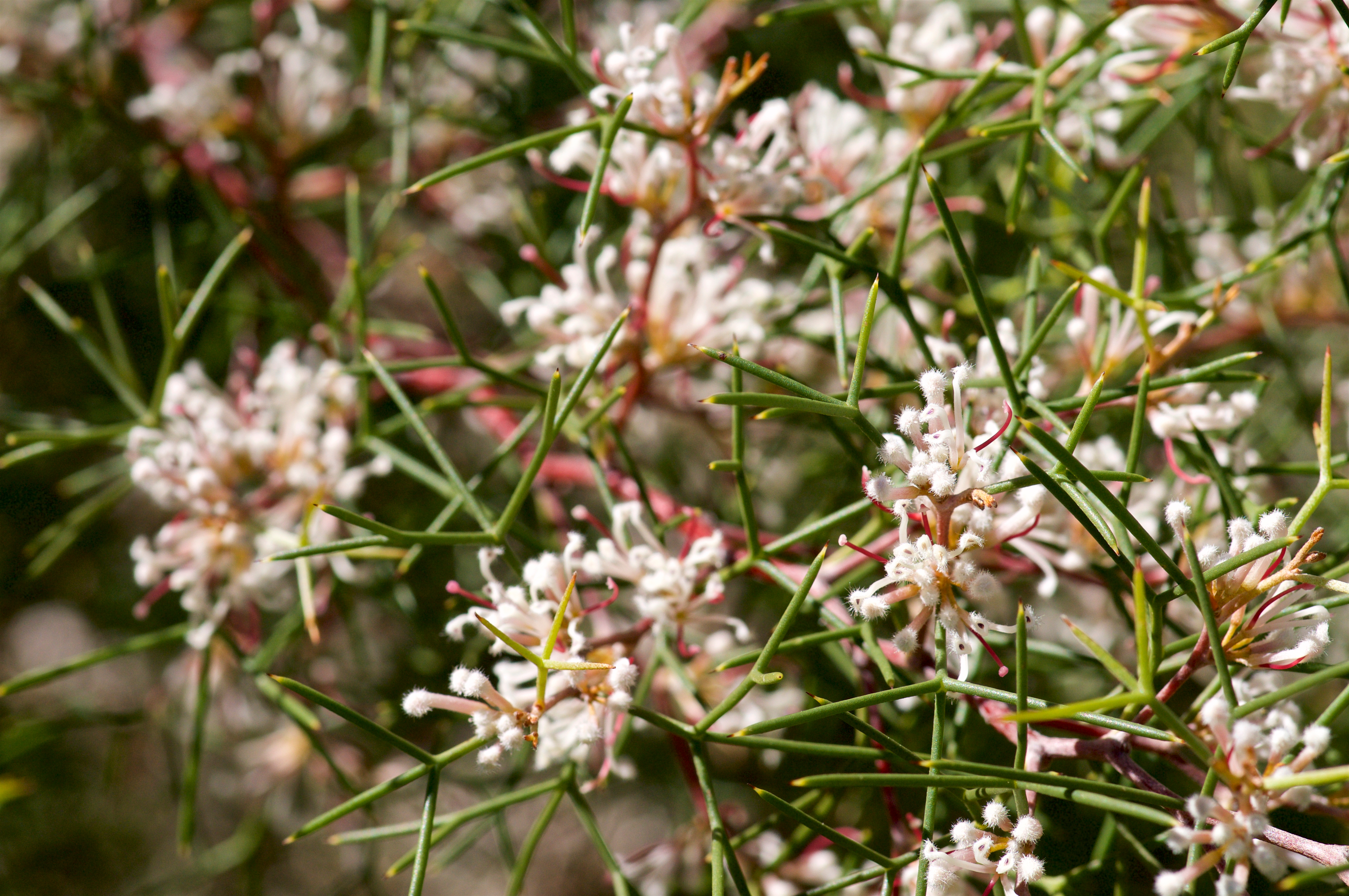Kerosene bush
(Hakea trifurcata)

Description
Hakea trifurcata, commonly known as two-leaf, two-leaved hakea, or kerosene bush, is a shrub, endemic to the south-west of Western Australia. The species has two leaf forms, needle-like or oblong egg-shaped. Unlike most hakea species the fruit remain green at maturity and resemble the broader leaf form. The mimicry creates a camouflage, reducing predation of the seed by granivores in particular cockatoos. Hakea trifurcata is an open or dense shrub 0.4–3 m (1 ft 4 in – 9 ft 10 in) high and about 3.5 m (11 ft) wide. It does not form a lignotuber. The branchlets have white or rusty coloured flattened, short soft silky hairs or are densely covered in soft hairs and quickly become smooth. The shrub has two forms of leaves usually needle-like, curved, straight or may be divided in segments, 2.2–7.5 cm (0.87–2.95 in) long and 0.8–1.3 mm (0.031–0.051 in) wide, grooved below and ending in a sharp point. The second form is wider, oblong to egg-shaped 2–5 cm (0.79–1.97 in) long, 6–19 mm (0.24–0.75 in) wide with a central vein and is either wedge-shaped at the apex or narrows gradually. Both leaf shapes have flattened, dense, silky rusty or white hairs but quickly become smooth. The inflorescence consists of between one and ten sweetly, strongly scented cream, white or pink flowers often with red styles. The clusters of flowers appear in leaf axils, producing nectar attractive to bees and birds. However the flower scent is conversely described by editors in Flora of Australia as "a strong smell, sometimes described as fetid".The flowers are surrounded by overlapping bracts 4.5–5.5 mm (0.18–0.22 in) long. The pedicels are 3–4 mm (0.12–0.16 in) long and covered with cream or rusty coloured hairs that are either short, soft and thickly matted or with flattened silky hairs, both forms extending onto the 6.5–10 mm (0.26–0.39 in) long perianth. The green fruit are smooth, obliquely egg-shaped and appear to resemble flat leaves, 1.5–2.5 cm (0.6–1 in) long and 0.5–0.8 mm (0.020–0.031 in) wide. The fruit of this Hakea species are not beaked or woody. Flowering occurs between April and October. Hakea trifurcata was first formally described by Robert Brown in 1810 and published the description in Transactions of the Linnean Society of London.Hakea trifurcata is named from the Latin (tres), referring to the three forked leaves.
Taxonomic tree:







